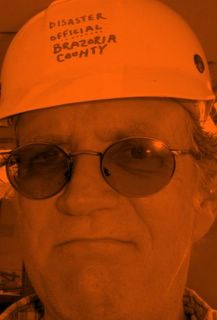The blood on BP's hands also stains OSHA and the State of Texas

Someone left a valve closed at the British Petroleum refinery in Texas City almost two years ago.
It led to an explosion that killed 15.
But the origins of the blast can be traced all the way to the board room of BP, the offices of the federal Occupational Safety & Health Administration (OSHA) and the hallowed halls of our own state government in Austin.
The 335-page report issued today by the U.S. Chemical Safety Board on the BP explosion is already on the Web sites of the daily papers. The Houston Chronicle, for instance, is leading with BP's cost-cutting and lax oversight in its story on the report.
Here we will flesh out some of the report and hit on other topics that we found interesting:
-- Unit operators were "likely fatigued" when the explosion occurred. "By March 23, operators had been working 12-hour shifts for 29 or more consecutive days. 'Fatigue causes cognitive fixation and impaired judgment and could lead operators to fixate on one operational parameter - such as the apparently declining liquid level - to the exclusion of other indicators...Fatigue has been recognized as a cause of major accidents in the transportation sector. Fatigue prevention regulations have been developed for aviation and other transportation sectors, but there are no fatigue prevention guidelines that are widely used and accepted in the oil and chemical sector.
-- BP didn't follow federal standards. BP investigated only 3 of 8 previous "blowdown" incidents that preceded the fatal explosion, and concluded on its own in 2004 that its own analsysis of these incidents was "poor."
-- BP supervisors were aware of equipment problems "but still had signed off on equipment checks as if they had been (corrected), which the report said reflected the prevalence of production pressures at the refinery."
-- There was no documented test method to check if the alarm that should have sounded a warning was actually working.
-- The refinery in Texas City had a history of deadly accidents. "Over a thirty-year period spanning Amoco (which owned the refinery before selling it to BP) and BP's ownership, 23 workers died at the facility - not counting the 15 workers killed in March 2005. 'Many of the safety issues that led to the March 2005 accident were recurring safety problems that had been previously identified in internal audits, reports, and investigations. Our findings show that both BP Group executives and Texas City managers became aware of serious process safety problems at the refinery beginning in 2002 and continuing through March 2005,' "
-- In 2002, the new refinery manager found the infrastructure and equipment to be 'in complete decline.' A follow-up study by BP found 'serious concerns about the potential for a major site accident' due to mechanical integrity problems. Later in 2002, another internal report explicitly connected the safety problems to earlier cost-cutting, stating, 'the current integrity and reliability issues at TCR [Texas City Refinery] are clearly linked to the reduction in maintenance spending over the last decade.' The prevailing culture at the Texas City refinery was to accept cost reductions without challenge and not to raise concerns when operational integrity was compromised.'
-- 'BP managers and executives attempted to make improvements from 2002 to 2005 but they were largely focused on personal safety - such as slips, trips, falls, and vehicle accidents - rather than on improving process safety performance, which continued to deteriorate.'
-- A safety survey of refinery personnel in 2004 "pointed to 'an exceptional degree of fear of catastrophic incidents' among other conclusions, and it stated respondents' belief that 'production and budget compliance gets ... rewarded before anything else.' Finally, a safety business plan for 2005 cited as a 'key risk' the possibility that 'Texas City kills someone in the next 12-18 months.' "
-- OSHA wasn't vigilant.
"Although the refinery had experienced numerous fatal incidents from 1985 to 2005, the investigation found that OSHA conducted only one planned PSM (Process Safety Management) inspection at the Texas City Refinery, in 1998. Other, unplanned OSHA inspections of the Texas City Refinery occurred in response to accidents, complaints, or referrals; the report said that unplanned inspections are typically narrower in scope and shorter than planned inspections. Proposed OSHA fines during the twenty years preceding the March 2005 disaster - a period when ten fatalities occurred at the refinery - totaled $270,255; net fines collected after negotiations totaled $77,860. Following the March 2005 explosion, OSHA issued the largest penalty in its history to BP, over $21 million for more than 300 egregious and willful violations."
-- OSHA conducts few refinery inspections, even though the federal agency envisioned "highly technical, complex and lengthy" inspections when the Process Safety Management standards were adopted in 1992 as part of the 1990 Clean Air Act."
-- Texas, Louisiana and New Jersey rely on the feds to enforce workplace safety, and the feds have done a lousy job.
"Federal OSHA conducted only nine such inspections in the targeted industries over that ten-year period, and none in the refining sector. State agencies in the 26 states that operate their own workplace safety programs conducted a total of 48 PQV (Program Quality Verification) inspections, including six at refineries. However, a number of states - including Texas, Louisiana, and New Jersey, where much of the U.S. oil and chemical industry is concentrated - rely upon federal OSHA to enforce workplace safety rules."
-- "California's Contra Costa County, which has its own industrial safety ordinance, inspects each covered facility every three years. A county staff of five engineers performs an average of 16 inspections per year. The U.K. Health and Safety Executive, which oversees a much smaller oil and chemical industry than do U.S. authorities, has 105 inspectors for high-hazard facilities; each covered facility in the U.K. is inspected every five years. Although OSHA did not provide requested information to the CSB investigation, available evidence indicates that OSHA has an insufficient number of qualified inspectors to enforce the PSM standard at oil and chemical facilities."
-- The workers killed in the explosion would have stood a better chance of survival had they not been in trailers located near the blast, which destroyed 13 of the structures and damaged 27 others.
"Industry trailer siting guidelines did not predict the level of trailer damage that we actually saw...A human being is more likely to be injured or killed inside a trailer - which can shatter during an explosion - than if he is standing in the open air. For that reason, occupied trailers have no place near hazardous process areas of refineries and chemical plants."
We hope this wasn't too drearily boring for those of you who have become accustomed to lighter fare here on The Official Weblog for the Petrochemical Underarm of Texas, but we felt compelled to type up some of the report's points that didn't make it into the daily paper, which is constrained by space limitations.
We hope a healthy portion of the beaucoup profits generated by the oil industry in recent years will be spent to upgrade refinery safety. That is all.
~~~~~~~~~~~~~
[CSB news release]














No comments:
Post a Comment